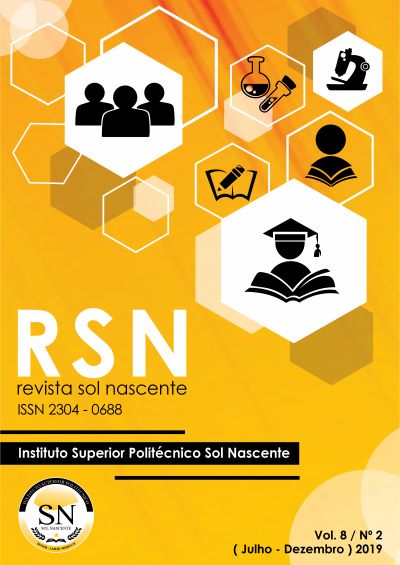Culture and education in the promotion of secure attachment and positive parenting processes
Keywords:
education, culture, child, transportation, attachment, positive parenting.Abstract
For many decades in the modern world, babies have been transported by means of aids, abandoning ancestral practices of body-carrying. However, in industrialised and developed societies, bodily transportation of babies, as an alternative to the pram, seems to be reintroduced. The ecological approach to parenthood, originally developed by Bronfenbrenner and Morris (1998), argues that the way in which parents cope with their parental responsibilities is associated with the resources available to them, in addition to their capacities and characteristics. Sameroff and Fiese (2000) postulated that the dyadic interactive quality derives from individual, interactional and social factors - as members of a community with its own social networks, norms, values and attitudes - and is influenced by its different contexts and its interrelationship auxiliary means. It is therefore important to know the culture, policies and practices in Angola in the field of childhood, from the application of the Convention on the Rights of the Child (CSDC), an international treaty signed by the General Assembly of the United Nations on 20 November 1989 and ratified by Angola, to legislative measures, in order to frame our interest in studying the effects of carrying babies on the back in the cultural context in which this proximity occurs, assessing the quality of the mother-child interaction in dyads with corporal transportation (on the back) and comparing it with dyads in which babies are carried on the breast, on the lap, or in prams. We would also like to know which specific aspects of the mother-child relationship are associated with bodily transportation. The contact, the affection and the maternal proximity may be the relational context in which the child feels safe and received, initiating the establishment of the attachment. According to Bowlby (1969), the establishment of attachment relationships is, in itself, a normative and universal phenomenon in the human species, although attachment should be understood in a systemic way, as the result of multiple factors and interactions (Cassidy, 2008). Importantly, studies seem to indicate that bodily carrying is preferential to transport.
References
Ainsworth, M. D., Blehar, M., Waters, E., & Wall, S. (1978). Patterns of attachment- A psychological study of the Strange Situation. New Jersey, NJ, US: Lawrence Eribaum Associates.
Assembleia Nacional de Angola (2010). Constituição da República de Angola. Angola
Assembleia Nacional de Angola (2012). Lei 25/12 Lei Sobre a Proteção e Desenvolvimento Integral da Criança. Angola. Retirado de: http://www.governo.gov.ao/VerLegislacao.aspx?id=511
Belsky, J. (1984). The determinants of parenting: a process model. Child Development, 55, 83-96. doi.org/10.2307/1129836
Bowlby, J. (1969/1982). Attachment and loss (Vol. I). London: Penguin Book.
Bronfenbrenner, U. (1986). Ecology of the Family as a Context for Human Development: Research Perspectives, Developmental Psychology, 22 (6), 723-742. doi.org/10.1037/0012-1649.22.6.723
Bronfenbrenner, U., & Morris, P. (1998). The ecology of developmental processes. In RM. Lerner (Ed.), Theorectical models of human development (5 ed., pp. 993-1028). (Handbook of Child Psychology; Vol. 1). New York: Wiley.
Bronfenbrenner, U. & Evans, G. W. (2000). Developmental science in the 21st century: emerging theoretical models, research designs and empirical findings. Social Development, 9, 115-125. doi.org/10.1111/1467-9507.00114
Carvalho, O. (2016). Crescer saudavelmente em Angola. Porto. Livpsi
Carvalho, O. (2019). Identidade, cultura e educação, A visão de uma portuguesa, com um coração Mwangolé. Revista Sol Nascente, 15| (pp. 4-6).
Cassidy, J. (2008). The nature of the child's ties. In J. Cassidy & P. R. Shaver (Eds.), Handbook of attachment: Theory, research, and clinical applications (pp. 3-22). New York, NY, US: Guilford Press.
Ferber, S. G., Feldman, R., & Makhoul, I. R. (2008). The development of maternal touch across the first year of life. Early Human Development, 84(6), 363-370. doi:10.1016/j.earlhumdev.2007.09.019.
Fuertes, M. (2011a). Histórias de vida: da investigação à intervenção precoce. Educação: Da Investigação às práticas, 1 (1), 89-109. doi.org/10.25757/invep.v1i1.56
Fuertes, M. (2011b). Estudo exploratório sobre a classificação da vinculação atípica: desorganização ou adaptação? Psychologica, 52, 349-370. doi.org/10.14195/1647-8606_52-1_17
Fuertes, M. (2019). Intervenção Precoce na Infância – práticas suportadas na evidência. In F. Veiga (org.) Psicologia da Educação: Temas de Aprofundamento Científico. Coimbra: Almedina (pp. 587-581).
Herrera, E., Reissland, N. & Shepherd, J. (2004). Maternal touch and maternal child-directed speech: effects of depressed mood in the postnatal period. Journal of affective disorders, 81 (1), 29-39. Doi: 10.1016/j.jad.2003.07.001
Main, M., & Solomon, J. (1986). Discovery of an insecure-disorganized/disoriented attachment pattern. In T. B. Brazelton & M. W. Yogman (Eds.), Affective development in infancy (pp. 95-124). Westport, CT, US: Ablex Publishing.
Main, M., & Hesse, E. (1990). Parents' unresolved traumatic experiences are related to infant disorganized attachment status: Is frightened and/or frightening parental behavior the linking mechanism? In M. T. Greenberg, D. Cicchetti, & E. M. Cummings (Eds.), The John D. and Catherine T. MacArthur Foundation series on mental health and development. Attachment in the preschool years: Theory, research, and intervention (pp. 161-182). Chicago, IL, US: University of Chicago Press.
Rodrigo, M., Chaves, M., & Quintana, J. (2010). Buenas prácticas profesionales para el apoyo de la parentalidade positiva.Madrid: Federación Española de Municipios y Provincias.
Santa Bárbara, C (2018). Relação mãe-filho(a) em bebés transportados junto ao corpo das mães (Dissertação de mestrado não publicada). Instituto Politécnico de Lisboa, Escola Superior de Educação, Lisboa Disponível em: http://hdl.handle.net/10400.21/9372
Santa Bárbara, C., Fuertes, M., Carvalho, O. (2019, no prelo). Relação mãe-filho(a) em bebés transportados junto ao peito e em bebés transportados em carrinhos. PSICOLOGIA.
Sameroff, A. & Fiese, B. (2000). Transactional regulation and early intervention. In J.P. Shankoff, & S. J. Meisels (Eds). Handbook as early childhood intervention (pp. 135-159). Cambridge: Cambridge University Press.
Thompson, R. A. (2008). Early attachment and later development: Familiar questions, new answers. In J. Cassidy & P. R. Shaver (Eds.), Handbook of attachment: Theory, research, and clinical applications (pp. 330-348). New York, NY, US: Guilford Press.
UNICEF - Angola (2015). As Crianças em Angola. Avanços e Desafios. Retirado de: https://www.unicef.org/angola/criancas-em-angola
van IJzendoorn, M. H., & Sagi-Schwartz, A. (2008). Cross-cultural patterns of attachment: Universal and contextual dimensions. In J. Cassidy & P. R. Shaver (Eds.), Handbook of attachment: Theory, research, and clinical applications (pp. 880-905). New York, NY, US: Guilford Press.
Downloads
Published
How to Cite
Issue
Section
License
Copyright (c) 2021 Olívia de Carvalho , Marina Fuertes, Carina Santa-Bárbara

This work is licensed under a Creative Commons Attribution-NonCommercial-ShareAlike 4.0 International License.


























